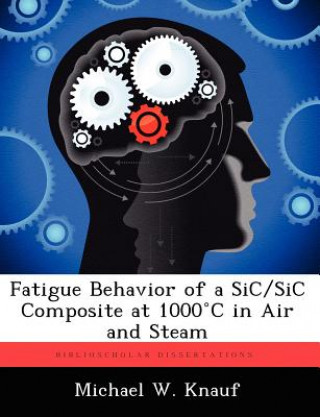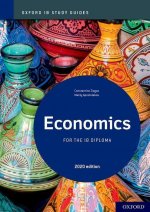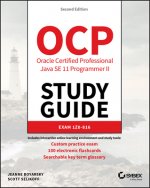
Kód: 08143054
Fatigue Behavior of a SiC/SiC Composite at 1000 DegreesC in Air and Steam
Autor Michael W Knauf
Tension-tension fatigue behavior of a prototype Silicon Carbide/Silicon Carbide (SiC/SiC) ceramic matrix composite (CMC) material was investigated at 1000°C in laboratory air and in steam environments. The material consists of a S ... celý popis
- Jazyk:
 Angličtina
Angličtina - Vazba: Brožovaná
- Počet stran: 170
Nakladatelství: Biblioscholar, 2012
- Více informací o knize

Mohlo by se vám také líbit
-

Two Funeral Sermons
518 Kč -

Jerusalem Sinner Saved; Or, Good News for the Vilest of Men; Being an Help for Despairing Souls
643 Kč -

Exposition of the Church-Catechism. by Samuel Clarke, ... Published from the Author's Manuscript. by John Clarke, ... to Which Is Added, His Three Pra
741 Kč -
![Barbara Philpot. A study of manners and morals. 1727 to 1737. [A novel.] Barbara Philpot. A study of manners and morals. 1727 to 1737. [A novel.]](https://media.libris.to/jacket/08007397t.jpg)
Barbara Philpot. A study of manners and morals. 1727 to 1737. [A novel.]
741 Kč -

China Sea Directory. Vol. III. ... Third edition. Compiled from various sources (by Staff-Commander W. H. Petley).
1008 Kč -

Lady's Cruise in a French Man-Of-War ... with Map and Illustrations.
763 Kč -

Paris in Eighteen Hundred and Two and Eighteen Hundred and Fourteen.
696 Kč -

Lemelson (Jerome) V. Topper Corp. U.S. Supreme Court Transcript of Record with Supporting Pleadings
723 Kč -

Fight with Faith
511 Kč -

Ambrosian Absolution
373 Kč -

Casualties of Life
534 Kč -

Desperate Strangers
765 Kč -

Dinner For Six
797 Kč -

IBM SPSS by Example
1065 Kč
Dárkový poukaz: Radost zaručena
- Darujte poukaz v libovolné hodnotě a my se postaráme o zbytek.
- Poukaz se vztahuje na celou naši nabídku.
- Elektronický poukaz vytisknete z e-mailu a můžete ihned darovat.
- Platnost poukazu je 12 měsíců od data vystavení.
Více informací o knize Fatigue Behavior of a SiC/SiC Composite at 1000 DegreesC in Air and Steam
Nákupem získáte 165 bodů
 Anotace knihy
Anotace knihy
Tension-tension fatigue behavior of a prototype Silicon Carbide/Silicon Carbide (SiC/SiC) ceramic matrix composite (CMC) material was investigated at 1000°C in laboratory air and in steam environments. The material consists of a SiC matrix reinforced with CG NICALON(TM) fibers woven in an eight harness satin weave (8HSW) and coated with a BN/SiC dual-layer interphase. The composite was manufactured by a Polymer Infiltration and Pyrolysis (PIP) process. A seal coat of SiC and elemental boron was applied to the test specimens after machining. The tensile stress-strain behavior was investigated and the tensile properties were measured at 1000°C. Tension-tension fatigue behavior was studied for fatigue stresses ranging from 60 to 100 MPa. The fatigue limit (based on a run-out condition of 2 x 105 cycles) was 80 MPa, which is 59% of the Ultimate Tensile Strength (UTS). The material retained 82% of its tensile strength. The presence of steam significantly degraded the fatigue performance at 1000°C. In steam the fatigue limit dropped below 60 MPa (44% UTS). Microstructural analysis revealed severe oxidation occurring in the specimens tested in steam, which resulted in accelerated damage development and failure. Through quantitative and qualitative analysis, the damage and premature failure of the composite in the steam environment is believed to be due to oxidation embrittlement. This material also showed considerably worse performance than similar SiC/SiC composites with a great deal of variability between specimens cut from different panels. The possibility exists that inadequate process control may be behind the degraded performance of the material and the panel-to-panel variability in performance.
 Parametry knihy
Parametry knihy
Zařazení knihy Knihy v angličtině Society & social sciences Education
1646 Kč
- Plný název: Fatigue Behavior of a SiC/SiC Composite at 1000 DegreesC in Air and Steam
- Autor: Michael W Knauf
- Jazyk:
 Angličtina
Angličtina - Vazba: Brožovaná
- Počet stran: 170
- EAN: 9781249623397
- ISBN: 9781249623397
- ID: 08143054
- Nakladatelství: Biblioscholar
- Hmotnost: 313 g
- Rozměry: 246 × 189 × 9 mm
- Datum vydání: 11. October 2012
Oblíbené z jiného soudku
-

Oxford IB Diploma Programme: IB Economics Course Book
1594 Kč -

OET Preparation
246 Kč -

Cambridge IGCSE (R) & O Level Complete Physics: Student Book Fourth Edition
929 Kč -

Business Partner B2 Workbook
462 Kč -

Business Partner B1 Workbook
434 Kč -

Imagine If...
306 Kč -

OET Reading Subtest Preparation
343 Kč -

Vol 2 Blackletter Lettering Adventures
635 Kč -

AS & A Level Maths For Dummies
455 Kč -

CompTIA Security+ Review Guide - Exam SY0-601
621 Kč -

Amazing Autistic Brain Cards
1000 Kč -

Hanbo Jutsu: Use of Hanbo, Cane and Walking Stick for Self Defense
284 Kč -

Embodied Teen
545 Kč -

Blue Book of Grammar and Punctuation: An Easy- to-Use Guide with Clear Rules, Real-World Examples , and Reproducible Quizzes, Twelfth Edition
393 Kč -

Positive Discipline Tools for Teachers
433 Kč -

Oxford IB Diploma Programme: IB Theory of Knowledge Course Book
1466 Kč -

Oxford IB Study Guides: Economics for the IB Diploma
1120 Kč -

Speed and Accuracy: Division
208 Kč -

GCSE Spanish Exam Practice Workbook (includes Answers & Free Online Audio)
220 Kč -

KS3 Maths 10-Minute Weekly Workouts - Year 7
199 Kč -

Vertical Academy
919 Kč -

Grade 9-1 GCSE Maths AQA Revision Question Cards - Higher
242 Kč -

Human Landscapes from My Country
656 Kč -

Cambridge IGCSE (R) & O Level Complete Chemistry: Student Book Fourth Edition
992 Kč -

Oxford IB Diploma Programme: IB Course Preparation Mathematics Student Book
992 Kč -

1000 TRIOS or gapped sentences for Cambridge Advanced and Proficiency Exams
608 Kč -

Business Partner B1+ Workbook
462 Kč -

(ISC) SSCP SG & SSCP Practice Test Kit, 3e
1745 Kč -

Einkorn
519 Kč -

Czech Verbs
954 Kč -

Motivation and Reinforcement
1161 Kč -

Pearson Edexcel International GCSE (9-1) English Language B Student Book
1328 Kč -

Read Write Inc. Phonics: Red Ditty Book Bag Books (Mixed Pack of 10)
1587 Kč -

Oxford International Primary Maths Second Edition: Practice Book 1
323 Kč -

Forensic Linguistics Articles
417 Kč -

Corrected Squares of The Book of Abramelin
14513 Kč -

Exam Prep for Microeconomics by Pindyck & Rubinfeld, 6th Ed.
1089 Kč -

KS3 Maths 10-Minute Weekly Workouts - Year 8
199 Kč -

Reading Mind - A Cognitive Approach to Understanding How the Mind Reads
556 Kč -

Internet Protocol over Link-16
1646 Kč -

Effect of Registration Errors on Tracking in a Networked Radar System
1646 Kč -

Princeton Review SAT Premium Prep, 2021
1136 Kč -

CEH v11 Certified Ethical Hacker Study Guide + Practice Tests Set
1869 Kč -

10 Practice Tests for the SAT, 2021 Edition
841 Kč -

OCP Oracle Certified Professional Java SE 11 Programmer II Study Guide - Exam 1Z0-816 and Exam 1Z0-817
1336 Kč -

Prepared
876 Kč -

Powerful Teaching: Unleash the Science of Learning
665 Kč -

Physics for You
1249 Kč -

Sphagnum
363 Kč
Osobní odběr Praha, Brno a 12903 dalších
Copyright ©2008-24 nejlevnejsi-knihy.cz Všechna práva vyhrazenaSoukromíCookies



 Vrácení do měsíce
Vrácení do měsíce 571 999 099 (8-15.30h)
571 999 099 (8-15.30h)